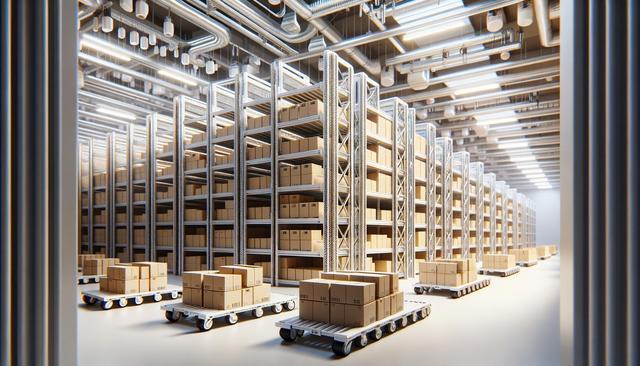Understanding Mobile Racking Systems
Mobile racking systems are advanced storage solutions designed to optimize warehouse space by allowing shelving units to move along guided tracks. These systems eliminate the need for multiple static aisles by enabling racks to shift and create an access aisle only when needed. This approach maximizes the available floor space while maintaining high-density storage. Ideal for warehouses with limited space or those looking to improve operational efficiency, mobile racking systems are increasingly being adopted in industries that require organized, scalable, and flexible storage solutions.
Unlike traditional fixed racking, mobile systems are mounted on motorized bases that can be controlled manually or via automated systems. This mobility allows warehouse operators to compactly store inventory and access each rack individually without compromising accessibility. The technology behind mobile racking promotes a more intelligent use of vertical and horizontal space, aligning well with the goals of smart warehousing.
Key Benefits for Smart Warehousing
Implementing a mobile racking system brings a variety of benefits that support the evolving demands of modern logistics and smart warehousing. One of the most significant advantages is space optimization. By reducing the number of fixed aisles, warehouses can increase storage capacity by up to 80%, depending on the layout and inventory type. Other notable benefits include:
- Improved inventory management through better visibility and accessibility
- Enhanced security with controlled access to specific aisles
- Reduction in energy costs due to a smaller footprint requiring less lighting and climate control
- Scalability that allows the system to grow with your business needs
These systems also support better ergonomics and safety by minimizing the need for excessive movement and reducing the risk of accidents. The flexibility offered by mobile racking aligns with automation and digital tracking tools, making them suitable for integration into warehouse management systems (WMS).
Common Applications and Industry Use
Mobile racking systems are used across various industries where efficient space utilization is critical. This includes sectors such as pharmaceuticals, food and beverage, automotive, and retail. Each of these industries benefits from the system’s ability to maintain order and streamline the retrieval process. For instance, pharmaceutical warehouses require strict inventory control and traceability, which mobile racking can support through its organized layout and compatibility with scanning systems.
In cold storage environments, where real estate is particularly costly, mobile racking reduces the volume needed to store goods while maintaining the required environmental controls. Similarly, in parts distribution centers, the ability to quickly access specific items without navigating long aisles significantly accelerates order fulfillment and reduces labor costs.
Design Considerations and Installation
When planning the installation of a mobile racking system, several factors must be considered to ensure optimal performance. These include the type of goods stored, weight capacity, floor load-bearing capacity, and the layout of the facility. Engineering assessments are required to determine whether the floor can support the dynamic loads introduced by mobile bases.
Customization is a key feature of mobile racking. Systems can be tailored to accommodate pallets, bins, or specialized containers. Installation typically involves setting up tracks on the warehouse floor, followed by securing the mobile units and integrating control systems. Some warehouses opt for semi-automated systems, while others invest in fully automated solutions for enhanced efficiency. Proper staff training and safety protocols are essential to ensure smooth operation post-installation.
Maintenance and Long-Term Value
Like any mechanical system, mobile racking requires regular maintenance to ensure longevity and performance. Routine inspections of the tracks, motors, and control units help prevent downtime and extend the system’s operational life. Investing in preventative maintenance not only safeguards the equipment but also supports uninterrupted warehouse operations.
The long-term value of mobile racking systems extends beyond space savings. These systems contribute to improved workflow, better stock rotation, and reduced overhead costs. Over time, the efficiency gains can lead to measurable improvements in order accuracy, fulfillment speed, and overall customer satisfaction. As businesses continue to adopt smart warehousing practices, mobile racking stands out as a reliable and adaptable solution that meets both current and future storage demands.
Conclusion
For warehouse managers and logistics professionals seeking to enhance operational efficiency, a mobile racking system offers a practical and forward-looking solution. Its ability to maximize space, improve inventory access, and integrate with digital tools makes it a valuable asset in any smart warehousing strategy. Whether you’re dealing with limited floor space or aiming to scale your operations, mobile racking provides the flexibility and performance needed to meet modern storage challenges effectively.




Leave a Reply